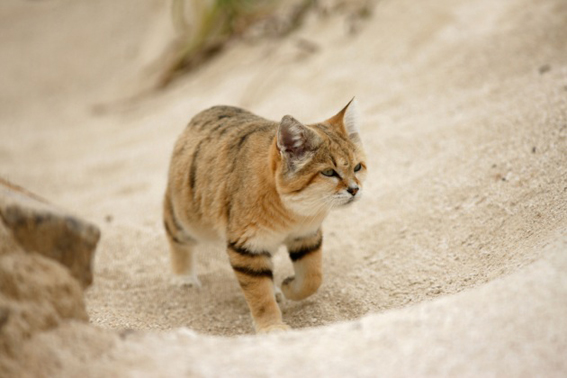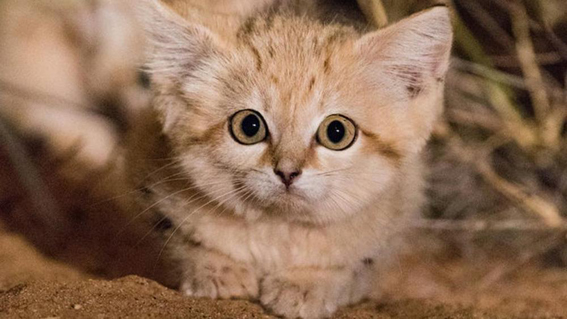THE SHY CAT OF THE SANDS
- Details
- Category: Special and wild cats
- Hits: 397
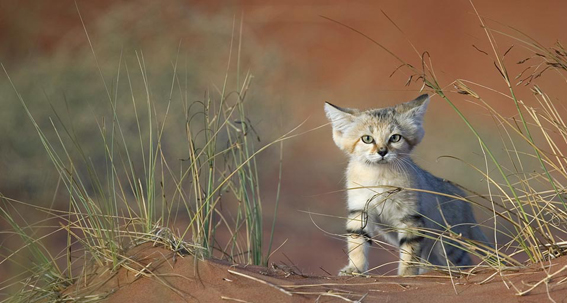
Today we discover a small feline that lives in the torrid and arid African and Asian deserts: The shy sand cat (Felis margarita Loche, 1858).
It prefers flat or slightly hilly terrain with a minimum of vegetation where it is less complicated to find food than in the dunes. It can live in temperatures between -5 and 52 ° C, seeking shelter in the den when conditions are extreme. To live it needs very little water and is able to resist for months with only the liquids obtained from the food it eats.
Victor Loche was the first European to describe the species in detail in 1858. He was baptized: Felis margarita in honor of Jean-Auguste Margueritte, the French soldier in charge of the expedition during which the animal was discovered.
The beautiful sand cat is stocky build, small in size, with short legs with long hair between the toes, has large pointed ears, large eyes and a long tail. The body is between 45 and 57 cm long and the tail varies from 28 to 35 cm. The weight varies between 1.5 and 3.5 kg. It has a large head and ears are widely spaced and has developed tympanic bubbles, which provide it with exceptional hearing to pick up vibrations on the sand. The mucous membrane that covers the eyelids is black.
In winter, the coat becomes thick, dense and long, with hairs that can reach a length of 5.1 cm. The nose is black, the eyes are greenish-yellow. The hairs between the toes form a sort of insulating cushion that covers the pads of the feet and allows them to walk quietly on the hot sand. It is not easy to find and follow its footprints because the claws of the hind legs are small and blunt and the thick fur that covers the feet makes its tracks almost invisible.
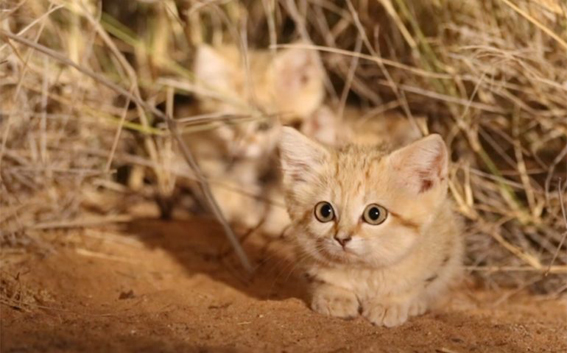
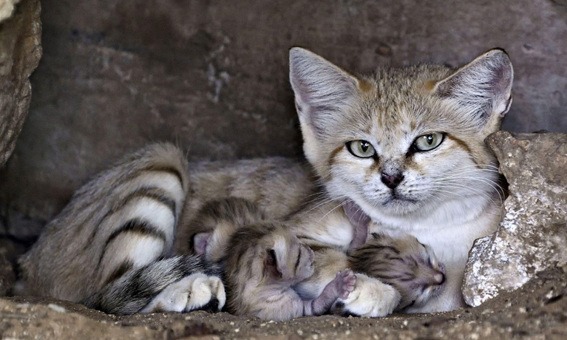
Kittens become adults quickly and within 5 months they grow to almost the size of adult cats. After a year they become completely independent and reach sexual maturity not long after. We have little information about life expectancy in the wild, but in captivity some specimens have reached 13 years of age.
